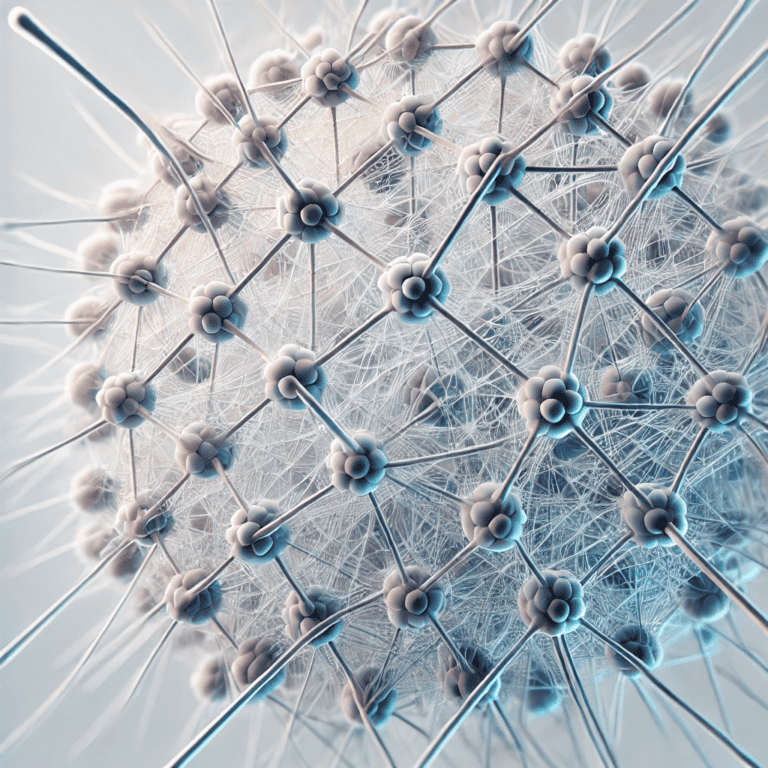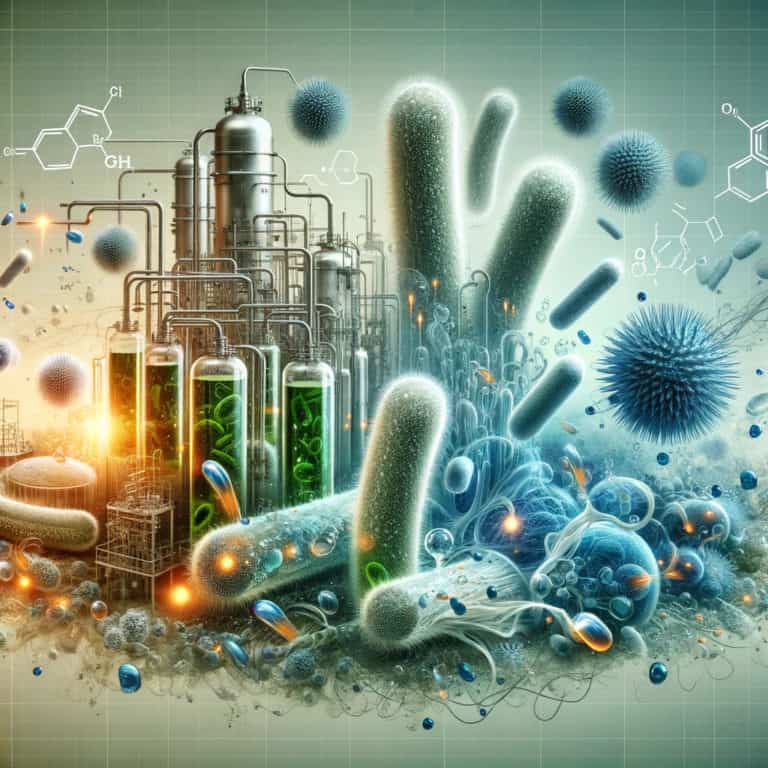Biodegradable Plastics: Synthesis, Properties, and Environmental Benefits
This review investigates biodegradable plastics, concentrating on their synthesis, characteristics, and environmental impact. It examines production methods, degradation processes, and the advantages of using this material over traditional plastics in terms of minimizing environmental pollution.

Introduction to Biodegradable Plastics
Biodegradable plastics serve an important role in addressing environmental concerns by providing a sustainable alternative to typical petroleum-based plastics. These plastics are intended to naturally degrade into non-toxic components, lowering the amount of plastic waste in the environment (Harrison et al., 2018). There are several varieties of biodegradable polymers, including polylactic acid (PLA), polyhydroxyalkanoates (PHA), and polybutylene succinate (PBS) (Napper and Thompson, 2019). Materials made from renewable resources, such as bamboo fibers or starch, are environmentally benign and sustainable (Khalil et al., 2012; Antonio & Martín, 2023).
Biodegradable plastics vary in composition, with some being oil-based and containing ester linkages that are destroyed by microorganism-secreted enzymes (Morohoshi et al., 2022). Biodegradable plastics can be colonized by marine microorganisms, showing their potential for degradation in aquatic environments (Dussud et al., 2018). Furthermore, biofilms and microbial communities can have an impact on the biodegradation efficiency of biodegradable polymers (Lee et al., 2020; Morohoshi et al., 2022).
Researchers have also investigated the use of additives and fillers to improve the mechanical qualities of biodegradable polymers, increasing their versatility for various applications (Post et al., 2021). The development of green plasticizers and flame retardants for biodegradable polymers has expanded their potential usage (Jin et al., 2020; Мaзитова et al.,2021).
Biodegradable plastics present a viable answer to the environmental issues raised by regular plastics. Biodegradable plastics help to create a more sustainable future by utilizing renewable resources, optimizing compositions, and improving mechanical qualities.
Production and Properties
Biodegradable polymers are manufactured using raw materials that differ from those used in conventional plastics. Biodegradable plastics are frequently generated from renewable resources such starch, cellulose, and plant oils (Nechita, 2020; Song et al., 2009). These raw materials are environmentally safe and provide a sustainable alternative to typical polymers derived from petroleum (Gironi & Piemonte, 2010).
Biodegradable plastics differ from normal plastics due to key physical and chemical features. Biodegradable plastics have properties such as biodegradability, compostability, and low environmental impact (Mohanan et al., 2020; Yuvaraj et al., 2021). These materials are susceptible to microbial breakdown, which converts them into natural molecules while leaving no hazardous residues (Amni et al., 2022). Furthermore, biodegradable plastics frequently include features such as increased moisture resistance, color retention, and resistance to microbial attacks, making them appropriate for a variety of applications, including food packaging.
Biodegradable plastics are typically manufactured by combining biopolymers, plasticizers, and additives to get the necessary characteristics. For example, adding cellulose fibers or plant oils can increase the tensile strength and durability of biodegradable polymers (Song et al., 2009). Furthermore, emerging processes such as microwave polymerization can help to produce biodegradable plastic films from renewable sources such as cornmeal (Nechita, 2020).
Biodegradable plastics are made by combining renewable raw materials with specific manufacturing processes to offer ecologically acceptable alternatives to traditional plastics. These materials have distinct physical and chemical properties, making them excellent for decreasing plastic waste and lowering environmental effect.
Environmental Impact and Applications
Plastic biodegradation is a complicated process driven by elements such as material physicochemical structure, ambient circumstances, and microbial populations involved (Choe et al., 2021). Microbial colonization, polymer-degrading enzyme synthesis, and mineralization all contribute to biodegradable plastic breakdown (Sánchez-Hernández et al., 2020). Biodegradation period varies based on plastic type, ambient circumstances, and microorganisms (Fòlino et al., 2020).
Biodegradable plastics are used in a variety of industries and offer a sustainable alternative to standard plastics. These polymers are used in industries such as packaging, textiles, consumer goods, agriculture, automotive, construction, medical, and food packaging (Kharb & Saharan, 2022). Biodegradable polymers, such as polylactic acid (PLA), polyhydroxyalkanoates (PHA), and polyhydroxybutyrate (PHB), are increasingly being used in food packaging due to their biodegradability and environmental benefits.
In comparison to traditional plastics, biodegradable plastics have major environmental benefits. They help to reduce reliance on fossil fuels, greenhouse gas emissions, and carbon footprint (Abdullah et al., 2023). Biodegradable plastics help with waste management by breaking down into natural components, reducing plastic pollution in landfills and oceans (Narancic et al., 2018). Furthermore, the use of biodegradable plastics in agriculture, such as biodegradable mulches, offers a long-term solution for minimizing plastic waste and environmental pollution (Goldberger et al., 2019).
Finally, biodegradable plastics offer a possible solution to the environmental issues raised by regular plastics. Their biodegradation process, which is regulated by a variety of circumstances, helps to break down these materials into environmentally benign components. Biodegradable plastics are paving the way for a more sustainable future by being used in a variety of industries and providing significant environmental advantages.
References
Antonio, J. and Martín, M. (2023). Optimal integrated plant for biodegradable polymer production. Acs Sustainable Chemistry & Engineering, 11(6), 2172-2185. https://doi.org/10.1021/acssuschemeng.2c05356
Dussud, C., Hudec, C., George, M., Fabre, P., Higgs, P., Bruzaud, S., … & Ghiglione, J. (2018). Colonization of non-biodegradable and biodegradable plastics by marine microorganisms. Frontiers in Microbiology, 9. https://doi.org/10.3389/fmicb.2018.01571
Harrison, J., Boardman, C., O’Callaghan, K., Delort, A., & Song, J. (2018). Biodegradability standards for carrier bags and plastic films in aquatic environments: a critical review. Royal Society Open Science, 5(5), 171792. https://doi.org/10.1098/rsos.171792
Jin, X., Xiang, E., Zhang, R., Qin, D., Jiang, M., & Jiang, Z. (2020). Halloysite nanotubes immobilized by chitosan/tannic acid complex as a green flame retardant for bamboo fiber/poly(lactic acid) composites. Journal of Applied Polymer Science, 138(1). https://doi.org/10.1002/app.49621
Khalil, H., Bhat, I., Jawaid, M., Zaidon, A., Hermawan, D., & Hadi, Y. (2012). Bamboo fibre reinforced biocomposites: a review. Materials & Design (1980-2015), 42, 353-368. https://doi.org/10.1016/j.matdes.2012.06.015
Lee, H., Kim, H., Jeon, E., Yu, H., Lee, S., Li, J., … & Kim, D. (2020). Evaluation of the biodegradation efficiency of four various types of plastics by pseudomonas aeruginosa isolated from the gut extract of superworms. Microorganisms, 8(9), 1341. https://doi.org/10.3390/microorganisms8091341
Morohoshi, T., Taniguchi, A., Sugawara, A., Suzuki, T., & Sato, S. (2022). Effects of marine sand on the microbial degradation of biodegradable plastics in seawater and biofilm communities that formed on plastic surfaces. Microbes and Environments, 37(4), n/a. https://doi.org/10.1264/jsme2.me22047
Napper, I. and Thompson, R. (2019). Environmental deterioration of biodegradable, oxo-biodegradable, compostable, and conventional plastic carrier bags in the sea, soil, and open-air over a 3-year period. Environmental Science & Technology, 53(9), 4775-4783. https://doi.org/10.1021/acs.est.8b06984
Post, W., Kuijpers, L., Zijlstra, M., Zee, M., & Molenveld, K. (2021). Effect of mineral fillers on the mechanical properties of commercially available biodegradable polymers. Polymers, 13(3), 394. https://doi.org/10.3390/polym13030394
Мазитова, А., Aminova, G., & Vikhareva, I. (2021). Designing of green plasticizers and assessment of the effectiveness of their use. Polymers, 13(11), 1761. https://doi.org/10.3390/polym13111761
Amni, C., Ismet, I., Irmayanti, I., Supardi, J., & Miftahurrahmah, M. (2022). Analysis of the addition of cmc to biodegradable plastics from banana hump. Proceedings of International Conference on Multidiciplinary Research, 4(1), 214-220. https://doi.org/10.32672/pic-mr.v4i1.3772
Gironi, F. and Piemonte, V. (2010). Life cycle assessment of polylactic acid and polyethylene terephthalate bottles for drinking water. Environmental Progress & Sustainable Energy, 30(3), 459-468. https://doi.org/10.1002/ep.10490
Mohanan, N., Montazer, Z., Sharma, P., & Levin, D. (2020). Microbial and enzymatic degradation of synthetic plastics. Frontiers in Microbiology, 11. https://doi.org/10.3389/fmicb.2020.580709
Nechita, P. (2020). Use of recycled cellulose fibers to obtain sustainable products for bioeconomy applications.. https://doi.org/10.5772/intechopen.86092
Song, J., Murphy, R., Narayan, R., & Davies, G. (2009). Biodegradable and compostable alternatives to conventional plastics. Philosophical Transactions of the Royal Society B Biological Sciences, 364(1526), 2127-2139. https://doi.org/10.1098/rstb.2008.0289
Yuvaraj, D., Iyyappan, J., Gnanasekaran, R., Ishwarya, G., Harshini, R., Dhithya, V., … & Gomathi, K. (2021). Advances in bio food packaging – an overview. Heliyon, 7(9), e07998. https://doi.org/10.1016/j.heliyon.2021.e07998
Abdullah, N., Sahudin, S., & Kaharudin, N. (2023). Exploring the role of chitosan in fabricating biodegradable films for functional food packaging: a review. Journal of Young Pharmacists, 15(1), 64-73. https://doi.org/10.5530/097515050505
Choe, S., Kim, Y., Won, Y., & Myung, J. (2021). Bridging three gaps in biodegradable plastics: misconceptions and truths about biodegradation. Frontiers in Chemistry, 9. https://doi.org/10.3389/fchem.2021.671750
Fòlino, A., Karageorgiou, A., Calabrò, P., & Komilis, D. (2020). Biodegradation of wasted bioplastics in natural and industrial environments: a review. Sustainability, 12(15), 6030. https://doi.org/10.3390/su12156030
Goldberger, J., DeVetter, L., & Dentzman, K. (2019). Polyethylene and biodegradable plastic mulches for strawberry production in the united states: experiences and opinions of growers in three regions. Horttechnology, 29(5), 619-628. https://doi.org/10.21273/horttech04393-19
Kharb, J. and Saharan, R. (2022). Sustainable biodegradable plastics and their applications: a mini review. Iop Conference Series Materials Science and Engineering, 1248(1), 012008. https://doi.org/10.1088/1757-899x/1248/1/012008
Narancic, T., Verstichel, S., Chaganti, S., Morales-Gamez, L., Kenny, S., Wilde, B., … & O’Connor, K. (2018). Biodegradable plastic blends create new possibilities for end-of-life management of plastics but they are not a panacea for plastic pollution. Environmental Science & Technology, 52(18), 10441-10452. https://doi.org/10.1021/acs.est.8b02963
Popescu, P., Popa, E., Mitelut, A., & Popa, M. (2020). Development of recyclable and biodegradable food packaging materials – opportunities and risks. Current Trends in Natural Sciences, 9(17), 142-146. https://doi.org/10.47068/ctns.2020.v9i17.016
Sánchez-Hernández, J., Capowiez, Y., & Ro, K. (2020). Potential use of earthworms to enhance decaying of biodegradable plastics. Acs Sustainable Chemistry & Engineering, 8(11), 4292-4316. https://doi.org/10.1021/acssuschemeng.9b05450



